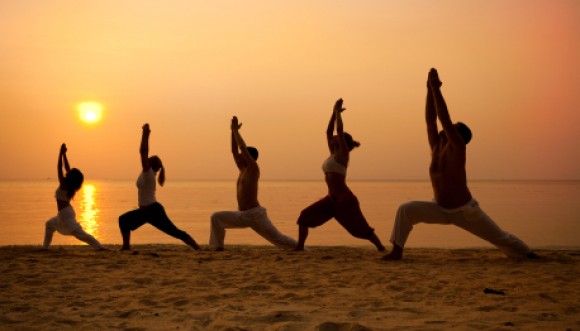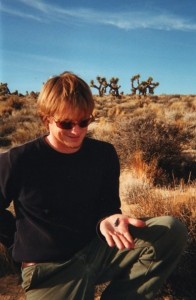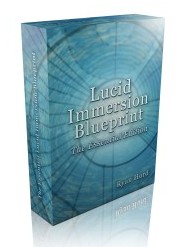
Success in lucid dreaming requires the ability to navigate a realm where gravity is not guaranteed. And where comfortable chats in a café can be interrupted by sudden feelings of spinning, drifting, or falling down an infinite chasm. During the REM dreaming state, as well as during hypnagogia, these sensations ebb and flow thanks to activation in the inner ear as well as the supercharged visual processing of REM.
That’s why working out the inner ear is the key to mastering the weirder aspects of lucid dreaming.
Phasic REM and Vestibular Land Mines
 Lucid dreaming tends to occur during the active form of REM sleep known as phasic REM, which includes greater brain activity as well as more eye movements than tonic REM.
Lucid dreaming tends to occur during the active form of REM sleep known as phasic REM, which includes greater brain activity as well as more eye movements than tonic REM.
Lucid dreams remembered from phasic REM often include awareness of vestibular (inner ear) hallucinations and intense bodily sensations as well.
It’s a trip.
How do you develop confidence during these weird experiences? I have already discussed how playing video games influence lucid dreaming, which combines saturation of an activity with often confusing visual stimuli: perhaps the perfect workshop for developing proprioception.
But we can also take a hint by looking at professional athletes, who reportedly have spontaneous lucid dreams that can improve motor skills and focus.
Furthermore, Hindu yogis and Sufi mystics develop lucid dreaming as a side effect of their bodily training.
These bodily practices all have this in common: the development of balance.
Pick up a Balancing Act
Incorporating a body practice that develops balance and focus is key. If you have lucid roadblocks involving confusion or getting overwhelmed by dizzying sensations, bodywork can help with developing proprioception and field independence.
[pullquote]Success requires the ability to navigate a realm where gravity is not guaranteed.[/pullquote]
You don’t have to become a master yogi though. Just find some activity that is attractive to you and in line with your interests. Some enjoy martial arts, especially the energetic art of Tai Chi.
There’s also rock climbing, bouldering and sailing. Fly-fishing is another example—this is lucid dreaming expert Scott Sparrow’s preferred body meditation.
And don’t forget the Wii.
Inexpensive habits include walking the rail of abandoned train tracks at your lunch hour or following along with a yoga video online.
Even a daily walking meditation develops bodily awareness. Simply take a walk and attend only to your breath and your body as you navigate the landscape. When thoughts come up, acknowledge them, and let them go.
Immerse yourself in the lucid landscape

Me in the Mojave Desert, 2002: showing off a rare Rosewood Springs point. I had so many lucid dreams during that archaeological survey in the high desert of CA, I had trouble finding time to write them down.
Personally, I am an avid hiker, stream-walker, and rock scrambler.
Recently, I took a hike in which I walked a fallen tree over a rushing stream. That night, I had a challenging dream that took place on a steel girder high above the ground. I found myself balancing just as I had on the tree trunk in waking life. As I slipped and almost fell, I noticed I could die and that thought led to lucidity.
Rather than escaping the scene or trying to fly, I stuck with the situational physics of the dream and found a solution that led me to safety.
I also enjoy walking terrain to find historic and prehistoric archaeological sites. The practice is intuitive, leading me to prehistoric hunter’s camps, mound sites, and rock clusters where women once pounded acorns and cornmeal while telling stories.
The practice is mirrored in my dreams, where I often discover beautiful ruins, golden treasures, and flint knives glowing in streambeds. The discoveries in the dreams inevitably lead to lucidity.
The beauty of developing a body practice for your lucid life is that you can simply redirect new energy to the things you already love to do. The practice also keeps you grounded and prevents the flighty spinning out that can sometimes accompany an intense new focus on dreaming.
So what’s your balancing act?
—————————————
 This article is adapted from my new digital kit the Lucid Immersion Blueprint, a how-to-guide for really encouraging lucid dreaming.
This article is adapted from my new digital kit the Lucid Immersion Blueprint, a how-to-guide for really encouraging lucid dreaming.
This is not the same old tired stuff about WILDS and DILDS you’ve heard before.
Rather, it’s the latest research in lucid dreaming combined with the ancient wisdom of lucid dreaming lore: the best of the old and the new.
Find out more about the Lucid Immersion Blueprint here.